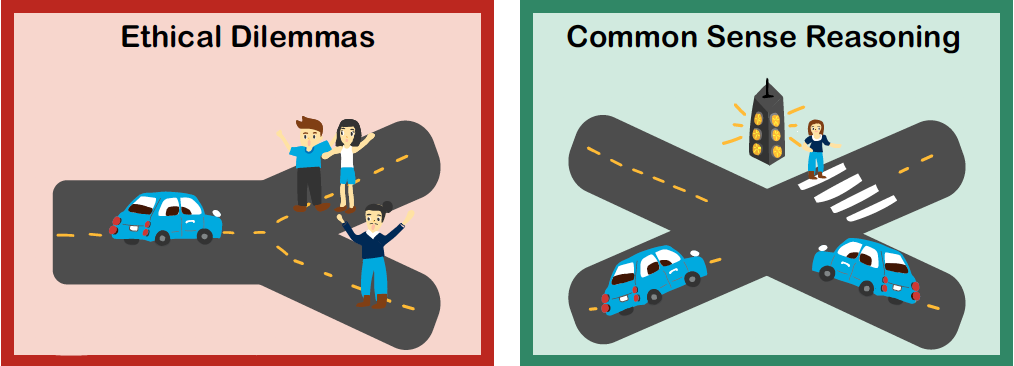A recently published scholarly article seeks to define “common sense” behavior for driverless or autonomous vehicles (AVs) in order to shape their behavior in dangerous or conflicted situations involving human life. The article describes driverless dilemmas as situations in which, for example, an AV may be called upon to decide between two courses of action, one of which may lead to a pedestrian fatality and one a fatality within the AV itself.

The ultimate goal is a traffic environment in which AVs exhibit ethically relevant common sense by behaving in a way that is safe, predictable, reasonable, uniform, comfortable, and explainable (SPRUCE) under real-world conditions and constraints. Both passengers and other road users must be able expect AVs to behave accordingly in order for autonomous driving to achieve regulatory status and market acceptance.
“From driverless dilemmas to more practical commonsense tests for automated vehicles,” published in the Proceedings of the National Academy of Sciences, is written by Julian De Freitas, Andrea Censi, Bryant Walker Smith, Luigi Di Lillo, Sam E. Anthony and Emilio Frazzoli.
From the dual premises that “one of the main objectives of automated driving technologies is to reduce casualties by creating safer traffic situations” and that “the software of AVs will produce behaviors with ethical ramifications,” the authors argue that “whereas humans are presumed (rightly or wrongly) to have the ‘common sense’ to behave ethically in new driving situations beyond a standard driving test, AVs do not (and probably should not) enjoy this presumption.”
The authors proceed to consider how to endow complex autonomous systems with ethically acceptable behavior and examine, at a high level, how to test the so-called common sense of an AV. They seek to lay the foundations for a practical and relevant framework that tests AV driving common sense as an integral part of road-rules testing.
One implication of this work is that AVs should be programmed with moral rules for solving such dilemmas. Historically, since the appearance of I, Robot by Isaac Asimov in 1950, various ideas for how to formulate autonomous machines that have common sense have been proposed. “In the case of automated driving, the AV must execute a set of control commands (e.g., steering, brake, throttle, gear position) that achieve the desired transportation goal (e.g., delivering occupants or goods from point A to B). More than one engineering solution is probably viable.”

